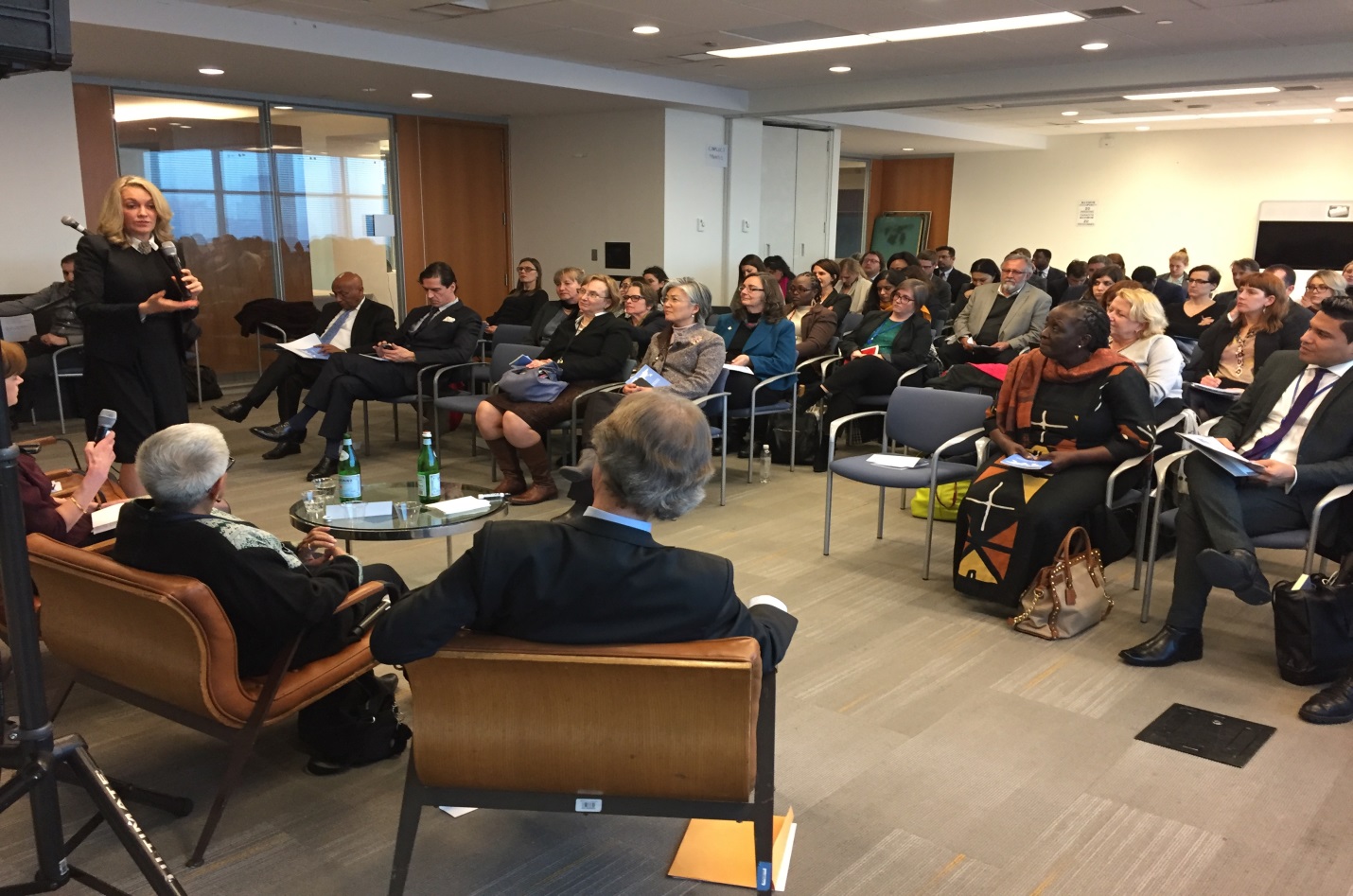
The recognition of the need to effectively include women in peace processes, self-evident as it mostly seems today, is relatively new. It is true that Security Council Resolution 1325 on Women and Peace and Security, the first such text to link women to peace and security and recognize that armed conflicts impact women and girls differently from men and boys, was adopted in 2000, a seeming eternity these days. But over a decade later, few formal mediation processes had effectively included women. Around that time (in 2013, to be precise), the Department of Political Affairs (DPA) began a series of high-level seminars on gender and inclusive mediation processes. The seminars have provided a space to explore alternative ways of designing more inclusive and effective peace processes, and led, among other things, to the drafting of a Guidance on Gender and Inclusive Mediation Strategies, launched on 27 March at UN headquarters.
Opening a panel discussion during the unveiling of the Guidance, Assistant Secretary-General for Political Affairs Taye-Brook Zerihoun and Ambassador Kai Sauer of Finland emphasized that inclusive peace processes and gender-sensitive peace agreements increase prospects for sustainable peace. Ambassador Sauer recognized the benefits of practical guidance to assist mediators and conflict parties achieve these ends and observed that the Guidance drew on a seminar series sponsored by Finland and Norway.
“The Guidance is an effective tool for increasing the participation of women and for applying gender sensitive approaches to mediation,” Ambassador Sauer said. “It is an A-Z manual which walks us through the different stages of a mediation process.”

Mr. Zerihoun underscored the UN’s commitment to advancing the inclusion of women in its peacemaking and peacebuilding work: “Increasing women’s leadership and influence in peace negotiations is a key priority for the new Secretary-General and the United Nations community more broadly,” he said.
During the discussion, Ambassador María Emma Mejía of Colombia, who had been a negotiator in an earlier and unsuccessful peace process in Colombia, said the current more successful effort in the country had been informed by the active role played by a gender sub-commission, as well as the fact that some 35 per cent of FARC combatants were women.
Former Presidential Adviser on the Philippines peace process, Teresita Quintos-Deles, recalled her experience overseeing all peace efforts for the Philippines government, including negotiations with the Moro Islamic Liberation Front, in which the participation of women (including the government’s lead negotiator) had been a defining feature.
“If a peace process is not inclusive, prospects for success decrease,” said Ambassador Geir Pedersen of Norway. “It’s common sense. If you want an inclusive process, women need to be at the table as equal participants in the dialogue and make decisions concerning their future.”
The discussion mixed the direct experience of practitioners with the core issues addressed by the Guidance: the representation of women in negotiating teams; the importance of gender-sensitive agreements; women as decision-makers in powersharing, ceasefire and implementation mechanisms; and the mobilizing force of civil society.
Ambassador Mejía touched on the role of women in “humanizing” conflict, an essential element for peacebuilding. In Colombia, she said, “Women were the first to come in and put a face to the conflict. They shared stories of how various segments of society had been affected by the violence”.
Highlighting the inclusivity of the Colombia peace process, Ambassador Mejía said, “The Government was able to reconcile itself to a civil society that it had viewed for decades as hostile. In the current peace process, civil society and the Government are working side by side”.
The elimination of all forms of discrimination and violence against women – vital to sustaining peace – is simply not possible without the inclusion of women in peace processes and implementation mechanisms of peace agreements. Recounting an episode during peace negotiations in the Philippines, Ms. Quintos-Deles said, “For three consecutive days, women negotiators insisted that the Bill of Rights explicitly recognise women’s political participation and protection from all forms of violence. Men would not have kept pushing for that inclusion.”
The new Guidance complements DPA’s ongoing efforts to establish solid gender and mediation capacity within the UN as well as partner organisations. Rooted in practical experience, it seeks to inform mediators and their teams, as well as conflict parties, about the principles and strategies for the effective inclusion of women, as well as a gendered perspective, in mediation processes. The Guidance recognizes that gender is but one aspect of inclusion, and addresses mediation preparation, process design, and a range of substantive issues including security arrangements, participation, constitutions, language and the implementation of peace agreements through a gender lens.